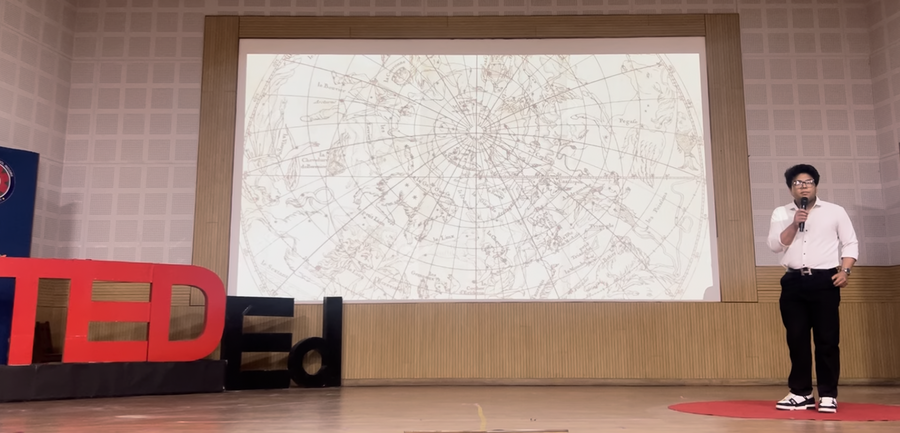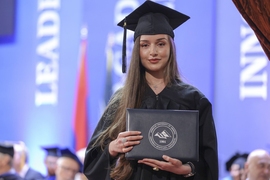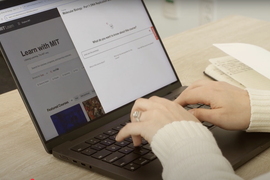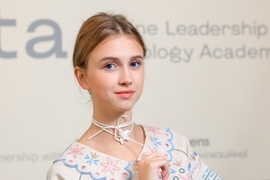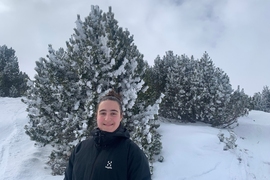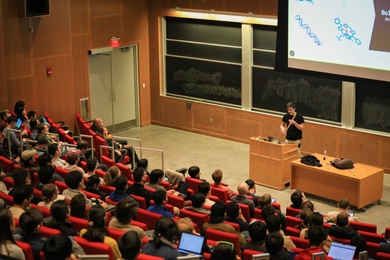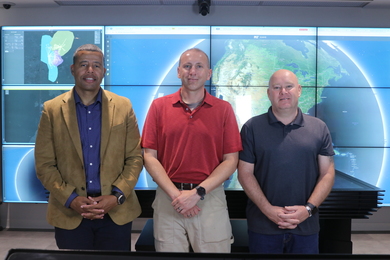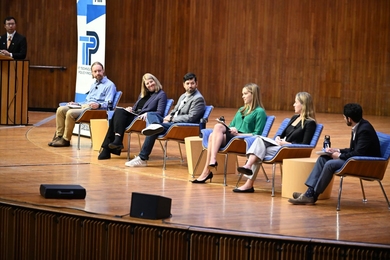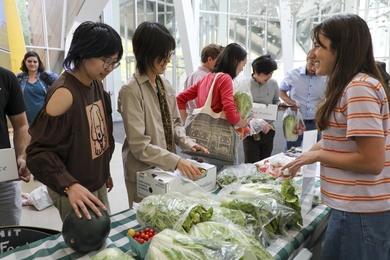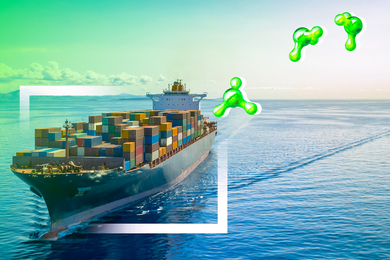At an age when many kids prefer to play games on their phones, 11-year-old Vivan Mirchandani wanted to explore physics videos. Little did he know that MIT Open Learning’s free online resources would change the course of his life.
Now, at 16, Mirchandani is well on his way to a career as a physics scholar — all because he forged his own unconventional educational journey.
Nontraditional education has granted Mirchandani the freedom to pursue topics he’s personally interested in. This year, he wrote a paper on cosmology that proposes a new framework for understanding Einstein’s general theory of relativity. Other projects include expanding on fluid dynamics laws for cats, training an AI model to resemble the consciousness of his late grandmother, and creating his own digital twin. That’s in addition to his regular studies, regional science fairs, Model United Nations delegation, and a TEDEd Talk.
Mirchandani started down this path between the ages of 10 and 12, when he decided to read books and find online content about physics during the early Covid-19 lockdown in India. He was shocked to find that MIT Open Learning offers free course videos, lecture notes, exams, and other resources from the Institute on sites like MIT OpenCourseWare and the newly launched MIT Learn.
“My first course was 8.01 (Classical Mechanics), and it completely changed how I saw physics,” Mirchandani says. “Physics sounded like elegance. It’s the closest we’ve ever come to have a theory of everything.”
Experiencing “real learning”
Mirchandani discovered MIT Open Learning through OpenCourseWare, which offers free, online, open educational resources from MIT undergraduate and graduate courses. He says MIT Open Learning’s “academically rigorous” content prepares learners to ask questions and think like a scientist.
“Instead of rote memorization, I finally experienced real learning,” Mirchandani says. “OpenCourseWare was a holy grail. Without it, I would still be stuck on the basic concepts.”
Wanting to follow in the footsteps of physicists like Sir Isaac Newton, Albert Einstein, and Stephen Hawking, Mirchandani decided at age 12 he would sacrifice his grade point average to pursue a nontraditional educational path that gave him hands-on experience in science.
“The education system doesn’t prepare you for actual scientific research, it prepares you for exams,” Mirchandani says. “What draws me to MIT Open Learning and OpenCourseWare is it breaks the old model of education. It’s not about sitting in a lecture hall, it’s about access and experimentation.”
With guidance from his physics teacher, Mirchandani built his own curriculum using educational materials on MIT OpenCourseWare to progress from classical physics to computer science to quantum physics. He has completed more than 27 online MIT courses to date.
“The best part of OpenCourseWare is you get to study from the greatest institution in the world, and you don’t have to pay for it,” he says.
Innovating in the real world
6.0001 (Introduction to Computer Science and Programming Using Python) and slides from 2.06 (Fluid Dynamics) gave Mirchandani the foundation to help with the family business, Dynamech Engineers, which sells machinery for commercial snack production. Some of the recent innovations he has assisted with include a zero-oil frying technology that cuts 300 calories per kilogram, a gas-based heat exchange system, and a simplified, singular machine combining the processes of two separate machines. Using the modeling techniques he learned through MIT OpenCourseWare, Mirchandani designed how these products would work without losing efficiency.
But when you ask Mirchandani which achievement he is most proud of, he’ll say it’s being one of 35 students accepted for the inaugural RSI-India cohort, an academic program for high school students modeled after the Research Science Institute program co-sponsored by MIT and the Center for Excellence in Education. Competing against other Indian students who had perfect scores on their board exams and SATs, he didn’t expect to get in, but the program valued the practical research experience he was able to pursue thanks to the knowledge he gained from his external studies.
“None of it would have happened without MIT OpenCourseWare,” he says. “It’s basically letting curiosity get the better of us. If everybody does that, we’d have a better scientific community.”
